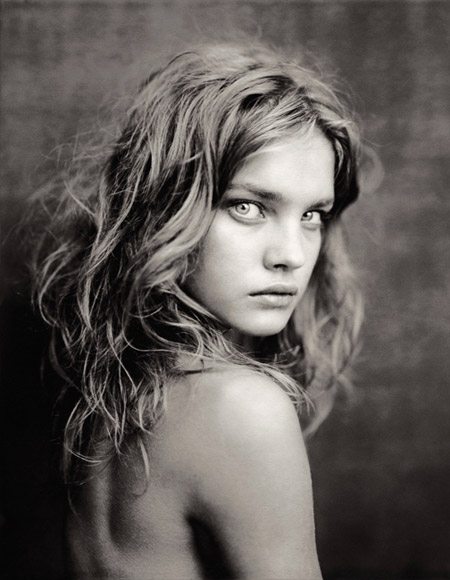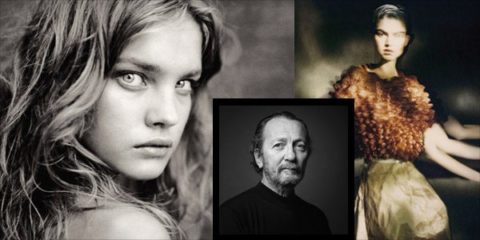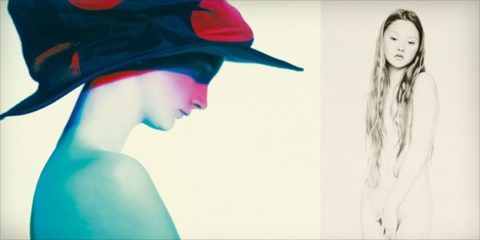Influential fashion photographer Paolo Roversi on nudity, the value of a good stylist and why logic has no place in creativity


By Sven Schumann
Staunch fans of fashion photography view Paolo Roversi as a one-man revolution. One of the early adopters of the Polaroid, the Italian-born, Paris-based photographer saw the potential in the camera in the ’70s, years before many of his contemporaries did. Using the Polaroid’s filter and frame to accentuate fashion’s most immediate and delicate moments, Roversi’s style of shooting spawned a legion of admirers, including Carine Roitfeld and the late Herb Ritts. After working under Harper’s Bazaar lensman Laurence Sackman during his salad days, Roversi developed his own POV and began to shoot solo for Elle and Dépêche Mode. His work created such a domino effect in fashion photography that his style became the new industry standard in the ’80s and ’90s. Scrolling through paoloroversi.com offers a taste of his influential commercial campaigns for the houses of Giorgio Armani and Romeo Gigli, as well as his contributions to Paris, British and Italian editions of Vogue. Hot on the heels of launching his most recent book of photographs, Paolo Roversi (Thames & Hudson), the 64-year-old visionary sat down at the Camera Work Gallery in Berlin and spoke to FASHION about his iconic visions—past and present.
Read our interview »
View the photos »
How would you define your technique?
“My photography is more subtraction than addition. I always try to take off things [on set]. We all have masks of expression, and I prefer them to be off. I find that when there is emptiness, interior beauty emerges.”
Alongside your fashion photography, you are known for your nude portraits. When did you first start photographing nudes?
“My first nude portrait was in the early ’80s with Inès de la Fressange. I was supposed to do a simple portrait for Paris Vogue but I asked her to take her clothes off. I lit her in a white background to make a shadow appear in the frame— this really brought out the expression on her face. Then I tried [the same technique] in other sessions using the same type of lighting. After 10 years of photographing nudes this way, I realized that there were enough pictures for a book.”
How challenging has it been to get your subjects to relax in front of the camera?
“These are not girls working in a place where it’s unusual to be nude, like an office, so it is never a big problem. A few girls have said, ‘My boyfriend doesn’t want me to,’ or ‘I’m too shy,’ but sometimes a few months later they are ready to do it. Most of the time, it’s just me and them on set. They understand that what I wish to do is capture beauty.”
What are the most alluring parts of the body to photograph?
“The eyes come first. They are the most expressive. Hands come second. The lips and the mouth are tied in third.”
What do you do when you have to shoot outfits that do not appeal to you aesthetically?
“It’s almost impossible! Clothes can be such a big part of a subject. I treat every image as a portrait, so fashion ultimately becomes part of my interpretation of the image.”
Can a stylist be your saviour?
“A stylist can be good medicine. They can save any situation. Fashion photography is such a team effort. I need a lot of people to work [with me], so that many energies come together in the same project with the same dream.”
What role does spontaneity play in your shoots?
“There are a lot of different moods coming onto the set. Models, stylists and assistants are constantly travelling, so there is emotion everywhere. One is happy, one is crying, one is angry, one is sleepy. Even if you have a precise idea of what you want to do, you can’t [do it]. Everyone is coming in with all this different energy and you have to deal with them. So you never know what you’ll do in the end. I like the accidents, the things that happen by chance. I let real life come to the picture so the creativity can flow.”
You once said there is nothing logical about creativity. Why?
“There’s no logic in the realm of the imagination. It’s more about feelings, emotion and love. You can’t explain why you fell in love with someone because some emotions cannot be [described properly]. It’s the same for me with photography. You can’t explain a feeling and I don’t want to. I prefer to keep the mystery.”

What inspires you?
“Something needs to touch me emotionally and bring me to a memory, a dream, a place. Photography always starts with a look. You look outside of your window and see something, like a girl walking down the street, and you want to be closer to get these emotions.”
Do you take a lot of pictures when you’re not in your studio?
“My life is full of pictures I didn’t take, or ones that I just took with my mind because I wasn’t fast enough with the camera. I’m not the kind of photographer who always has a camera around his neck for fear of losing a moment. Maybe one day I’ll write a book about the pictures I didn’t take.”
What has been the biggest change in your profession over the years?
“There are so many more photographers out there now. Years ago, images were mostly found in magazines and books. Now they are on the internet and on computer screens. Everything is going much faster, and anyone can be a photographer. You can buy a camera and take a picture and everyone around the world can see it. You can have a large audience immediately.”
Do you still shoot with the 8×10 Polaroid, the camera that every photographer associates with your photos?
“Less and less, since the film isn’t made anymore. When the film is gone, it’s the end of the game. I bought everything I could find, but I can’t find anything anymore.”
Are you planning on making the transition to digital?
[Exhales, laughs] “I’m not planning. I’m still working. Sometimes I work with digital, but I don’t like it much. It’s difficult. I’ve always tried working with different cameras and I was never attached to one. With digital cameras, you can delete the picture immediately and take another one. Photographers can lose contact with their subject this way.”
Who are the people that you still want to shoot?
“There are many artists I like. Young artists like Mia Wasikowska. I have a little list in my studio of people I’d like to meet.”
Do you approach people yourself sometimes, when you see someone who’s on your list?
“If I really feel something strongly, I have no problem saying, ‘Stop! Don’t move! I want to take a picture of you!’ Sometimes they are scared, and I have to say, ‘Don’t be scared, I’m a photographer and I would love to take a picture of you.’ And sometimes they run away.”







